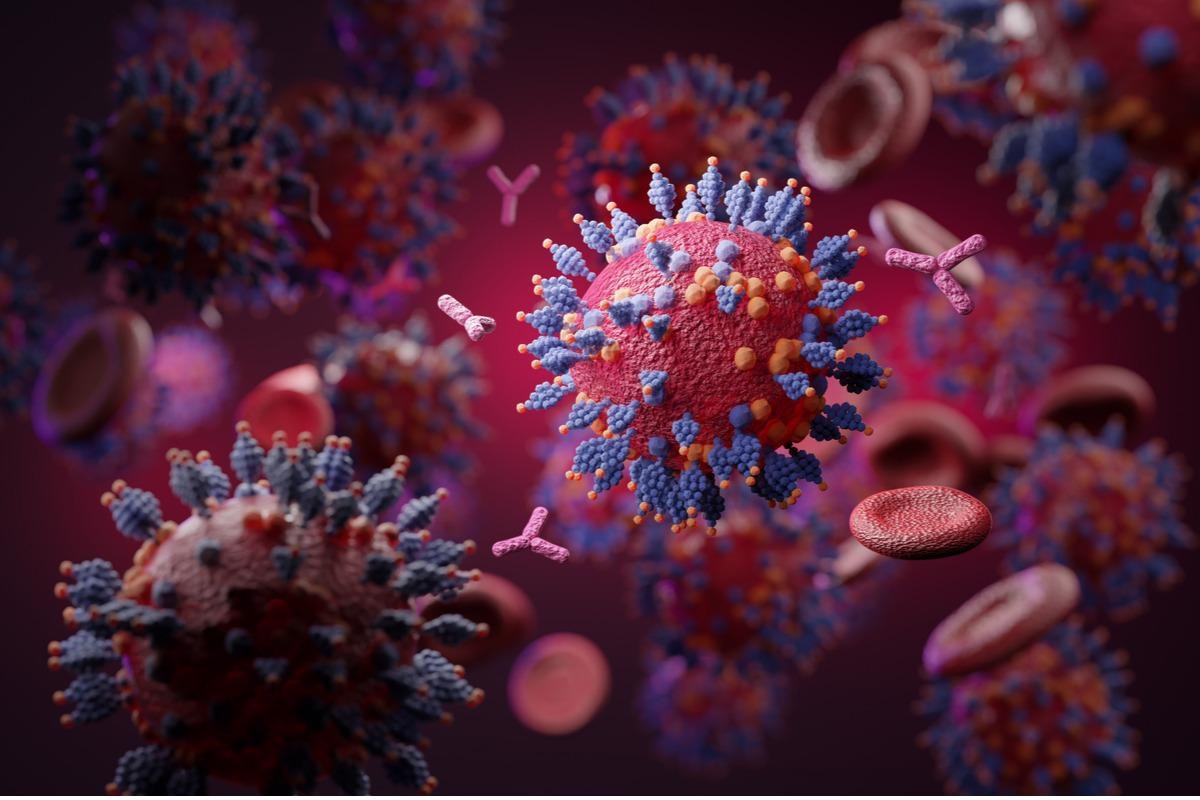In a recent study posted to the Research Square* preprint server, researchers conducted an in vitro analysis to assess the efficacy of monoclonal antibodies against the severe acute respiratory syndrome coronavirus 2 (SARS-CoV-2) Omicron BA.2 and BA.1 variants.
 Study: In vitro activity of therapeutic antibodies against SARS-CoV-2 Omicron BA.1 and BA.2. Image Credit: Fit Ztudio/Shutterstock
Study: In vitro activity of therapeutic antibodies against SARS-CoV-2 Omicron BA.1 and BA.2. Image Credit: Fit Ztudio/Shutterstock

 This news article was a review of a preliminary scientific report that had not undergone peer-review at the time of publication. Since its initial publication, the scientific report has now been peer reviewed and accepted for publication in a Scientific Journal. Links to the preliminary and peer-reviewed reports are available in the Sources section at the bottom of this article. View Sources
This news article was a review of a preliminary scientific report that had not undergone peer-review at the time of publication. Since its initial publication, the scientific report has now been peer reviewed and accepted for publication in a Scientific Journal. Links to the preliminary and peer-reviewed reports are available in the Sources section at the bottom of this article. View Sources
Background
The BA.2 variant of the SARS-CoV-2 Omicron strain has largely replaced the BA.1 strain in the present-day coronavirus disease 2019 (COVID-19) scenario. The mutations in its spike (S) protein differ from those of the BA.1 strain. These varied mutations have altered the therapeutic efficacy of monoclonal antibodies.
In previous studies, monoclonal antibodies such as Sotrovimab have been administered as a 500 mg intravenous (i.v.) injection for the initial management of infections. Additionally, a 300mg (150 mg Tixagevimab and 150 mg Cilgavimab) intramuscular dose (i.m) dose of the AZD7442 antibody cocktail has been used for the prophylaxis of infections. However, the efficacy of a double-dose (Tixagevimab 300mg and Cilgavimab 300mg i.v.) regimen has not been ascertained.
About the study
In the present study, the researchers evaluated and compared the neutralizing capacity of several monoclonal antibodies against the clinical strains BA.2 and BA.1 of the Omicron variant. For reference, they used two viral strains of the same B.1 lineage-Delta strain (B.1.617.2) and the D614G/ BavPat1 European ancestral strain.
The monoclonal antibodies used in this study had proven efficacy against the Omicron BA.1 variant. These antibodies targeted the receptor-binding domain (RBD) of the viral S protein and the core. The antibodies tested were Sotrovimab or Vir-7831 and two other monoclonal antibodies- Tixagevimab (AZD8895) and Cilgavimab (AZD1061), independently and as part of the AZD7442/Evusheld antibody cocktail.
The neutralization potency of these monoclonal antibodies was based on their ability to reduce the amount of viral ribonucleic acid (RNA) in the VeroE6 TMPRSS2 cell lines. The viral RNA levels were measured by quantitative-reverse transcription-polymerase chain reaction (qRT-PCR) two days after infection. The 50% effective concentration (EC50) values were determined based on the viral RNA quantities. With the help of EC50 values, the team calculated the neutralization efficacy of all treatments and denoted them in the form of MNU50. The MNU50 values enabled a realistic comparative assessment of the treatments against the viral strains.
Results and discussion
The results showed that Sotrovimab was less effective against BA.2 than the BA.1 variant. This was in accordance with previous in vitro studies that reported retained BA.1 neutralization capacity of Sotorivumab with EC50 values of 55 and 441 ng/mL for B.1 and BA.2 variants, respectively. However, the neutralizing efficacy decreased by 8- and 1.5-fold compared to ancestral strain and BA.1, respectively.
Tixagevimab demonstrated sparse neutralization capacity against BA.2 and BA.1 strains (EC50 values exceeding 5000 nanograms per liter). Contrastingly, Cilgavimab neutralized the BA.2 strain with a slight increase in EC50 values from about 33 ng/mL for B.1 strain to 50 ng/mL for BA.2 strain. This indicates that Cilgavimab showed a negligible loss of neutralization efficacy (B.1 to BA.2 variant ratio value 1.5). Overall, Cilgavimab demonstrated a 32-fold higher BA.2 neutralizing capacity compared to that against BA.1 strain in this study. This can be attributed to the lack of G446S genetic mutation in BA.2.
The Evusheld cocktail EC50 values demonstrated a shift from 27 ng/mL for B.1 strain to 73 ng/mL for BA.2 strain. This indicates that the neutralizing activity of the cocktail was 2.7 times lower for BA.2 compared to B.1, whereas BA.2 was neutralized by ten times higher potency than the BA.1 strain. Thus, Cilgavimab showed enhanced efficacy against BA.2 as part of the Evusheld cocktail. This was in accordance with the MNU50 values (27.3 MNU50 for BA.2 and 2.8 MNU50 2.8 for BA.1).
However, Tixagevimab efficacy was low when used alone or in the Evusheld cocktail. Additionally, when 300 mg of the cocktail was compared to 500 mg Sotrovimab, the latter was more efficacious against BA.1 strain (MNU50 for Sotrovimab was 11.3 and MNU50 for AZD7442 was 2.8).
Conclusion
To summarize, 500mg Sotrovimab retained modest BA.2 neutralizing activity in comparison to the BA.1, whereas 300mg AZD7442 activity was limited. Although the efficacy of Cilgavimab increased when used as part of the Evusheld cocktail, Tixagevimab neutralizing activity remained persistently low. Therefore, further research must be conducted to determine whether Tixagevimab should be administered independently or as part of the AZD7442 cocktail by in vivo analyses.

 This news article was a review of a preliminary scientific report that had not undergone peer-review at the time of publication. Since its initial publication, the scientific report has now been peer reviewed and accepted for publication in a Scientific Journal. Links to the preliminary and peer-reviewed reports are available in the Sources section at the bottom of this article. View Sources
This news article was a review of a preliminary scientific report that had not undergone peer-review at the time of publication. Since its initial publication, the scientific report has now been peer reviewed and accepted for publication in a Scientific Journal. Links to the preliminary and peer-reviewed reports are available in the Sources section at the bottom of this article. View Sources